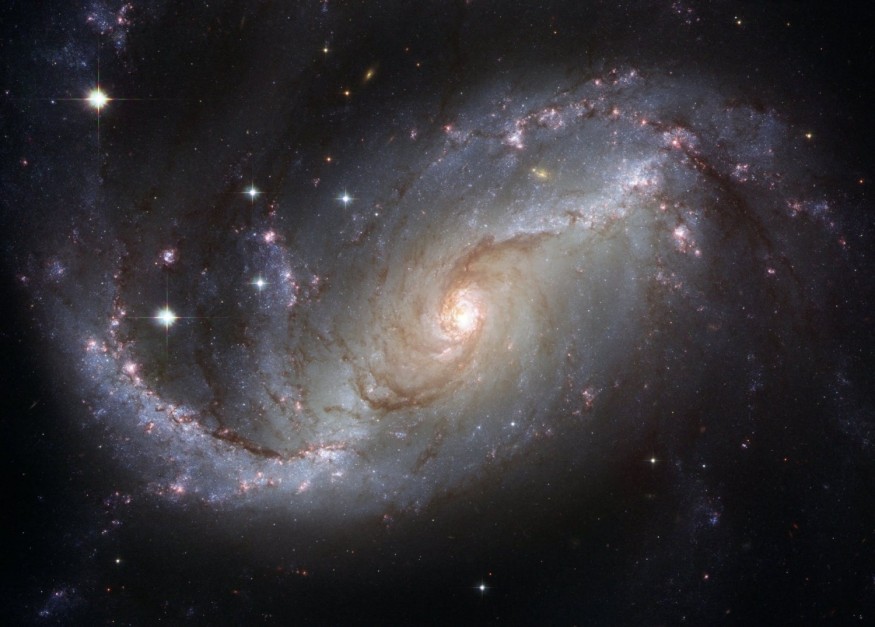
Every galaxy that is Milky-Way sized should have hundreds of millions of black holes, created mostly from the deaths of most stars. At the centers of these galaxies, massive black holes have devoured enough matter to grow to millions or even billions of times the Sun's mass, where sometimes they are caught in the act of feeding on the matter, removing radiation and relativistic jets in the process. But, any in-falling mass would look like it would take an infinite time to fall in, does that prevent black holes from growing?
Questions about the growth of black holes
It sounds like a paradox, but this explains how it all happens. When you think about a black hole, there are two different ways that you can do it. The first way is to consider it from the point of view of outside, external observer. You can picture a black hole the way scientists would see it. From this perspective, a black hole is simply a region of space where enough mass is contained within a given volume that the escape velocity exceeds the speed of light.
Outside of that particular region, space may be bent, but particles that move or accelerate fast enough, as well as light itself, can both propagate to any arbitrary location in the Universe. But inside that region, there is no escape, with the border between outside and inside defined as the black hole's event horizon.
The second way to think about a black hole is from the perspective of a particle that crosses the event horizon from inside to outside and therefore falls into the black hole. From outside the event horizon, the in-falling entity sees the outside Universe as well as the blackness of the event horizon, which grows larger and larger as they approach it.
Once the in-falling entity crosses the event horizon, something amazing happens. No matter which direction they accelerate or move in, no matter how fast or how powerfully they do so, they will always find themselves headed towards a central singularity. The singularity is either a zero-dimensional point or a one-dimensional ring and it can't be avoided once the event horizon is crossed.
It is important not to mix these perspectives up or conflate them with one another. Even though they are both valid, it is not really possible to do a simple transformation from one point of view to the other. The reason is that from outside the black hole, you can never gain any information about what is going on in the interior of the event horizon, while from inside the black hole, one can't send information to the outside.
And yet particles that are containing angular momentum, energy, and charge, really do fall into black holes, increase their mass, and can cause those black holes to grow. To understand exactly how this happens, scientists needed to look at the problem from both perspectives independently and only then did they see how to reconcile the seemingly paradoxical aspects of the puzzle.
The physics is a bit easier to understand if it is viewed from the perspective of the in-falling particle. If the particle, existing in the curved space that's present in the vicinity of a pre-existing black hole, finds itself on a trajectory that will cross the event horizon, there is a clear before and after scenario.
Before it crosses the event horizon, the black hole has a particular mass, event horizon radius, and spin, while the in-falling particle adds a but deformation to the space that it occupied. When it crosses over to the inside of the event horizon, its mass and angular momentum can now add a supplementary contribution to the black hole's previous parameters, causing the event horizon to grow. Everything makes clear sense from the perspective of the in-falling particle.
How can growth be seen given the paradox?
The main thing to remember is that for an external observer, a black hole is a region of space with so much energy and matter that light can't escape from within that region. If that simple definition is accepted, a thought experiment can be done completely and it can resolve the paradox. Imagine a black hole of one solar mass, that does not rotate, with an event horizon of the exact size that the Sun would be if it collapsed into a Schwarzchild black hole which is a sphere of about 3 kilometers in radius.
The thing is, with an extrasolar mass of material at just a bit more than 3 kilometers away from the predicted central singularity, there are now two solar masses of material in this particular region of space. The event horizon of a two solar mass object is around 6 kilometers in radius. This means that all of this material is now inside the event horizon after all.
That is the resolution to this paradox, when matter falls onto a black hole, as seen by an outside observer, it only approaches the event horizon asymptotically. But because the matter has a mass in it, that mass is now contained within a critical volume of space, and that causes the new event horizon to now encompass the additional material that newly accumulated around the black note.
It is true that material from outside the black hole, even as it falls in on an inescapable trajectory, will never appear to cross the original event horizon from the perspective of an outside observer. But the more energy and mass a black hole gets, the larger the event horizon becomes, and that means the newly in-falling material can make the inside of the even horizon easily, and it appears after that matter has made it to within a very small volume of space, close enough to the old enough event horizon to cause it to grow. Black holes do grow over time.
ALSO READ: Black Hole Captured!












